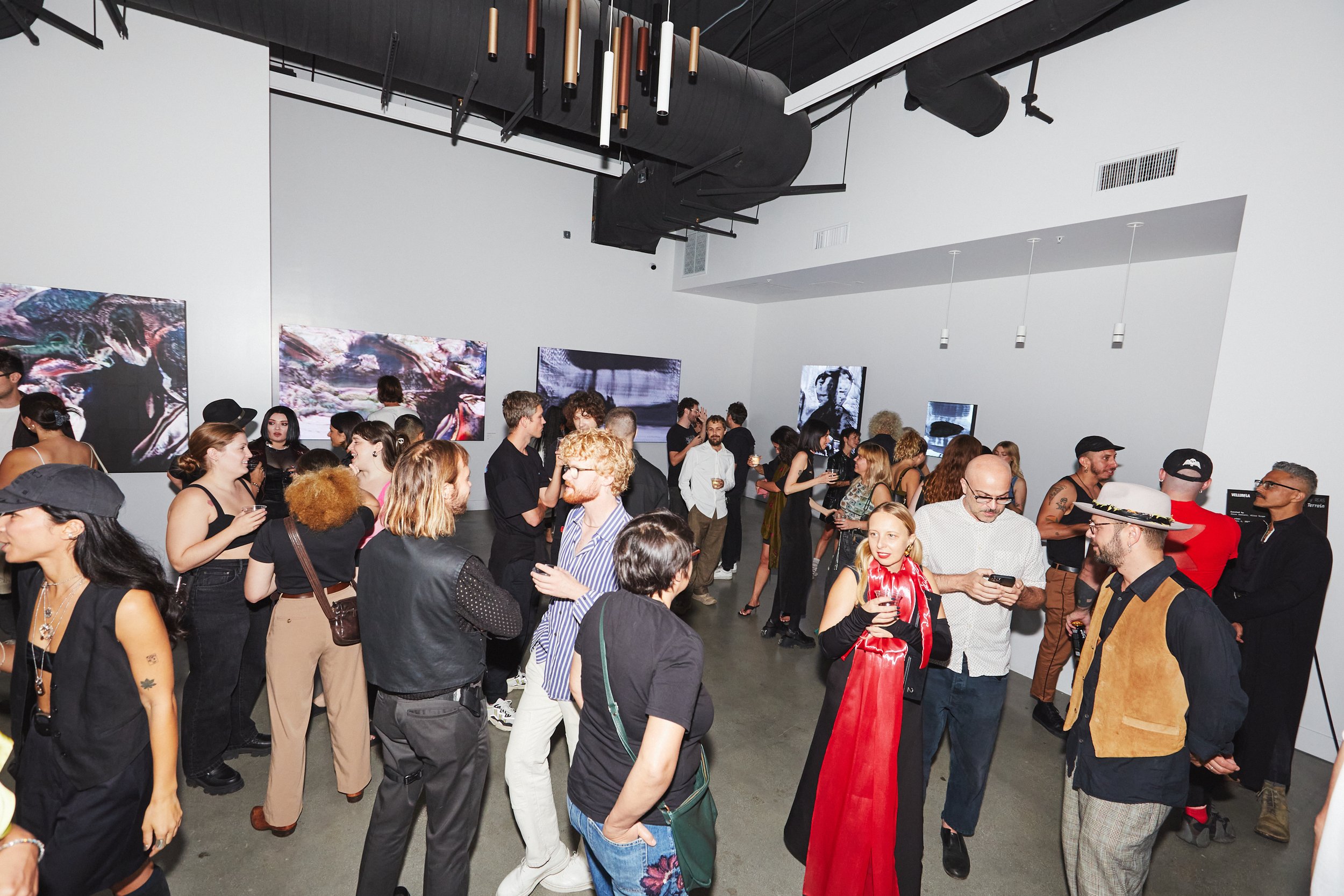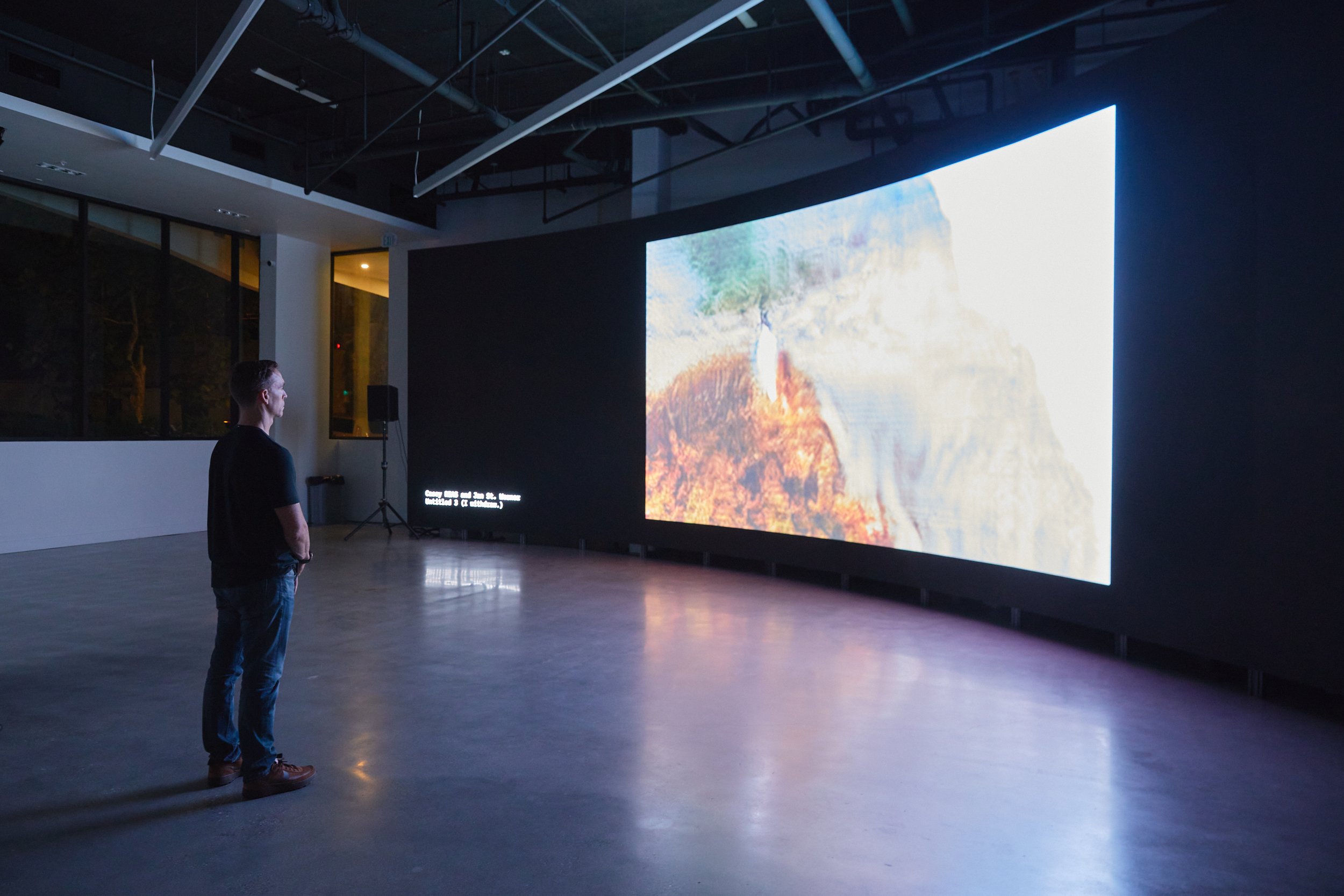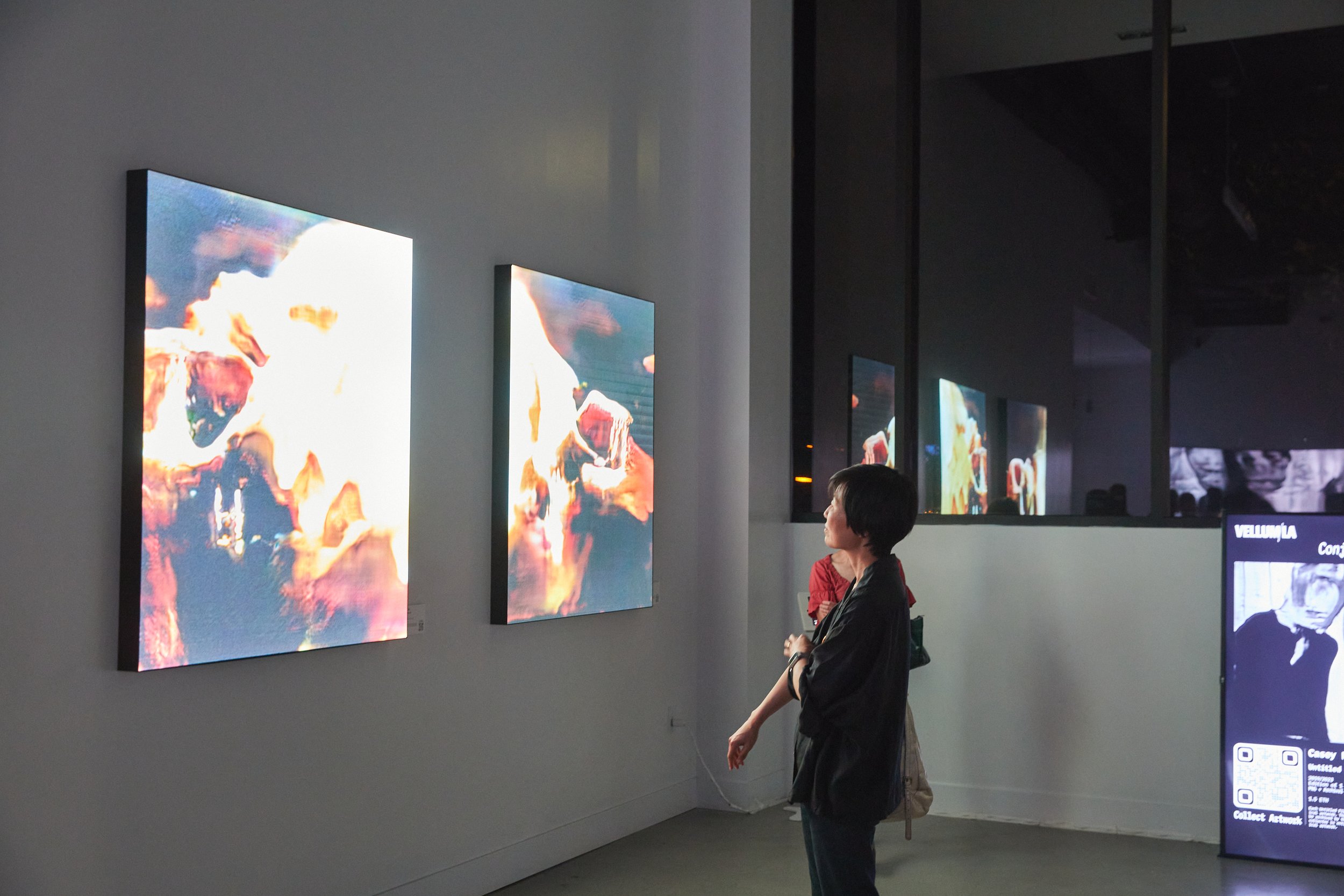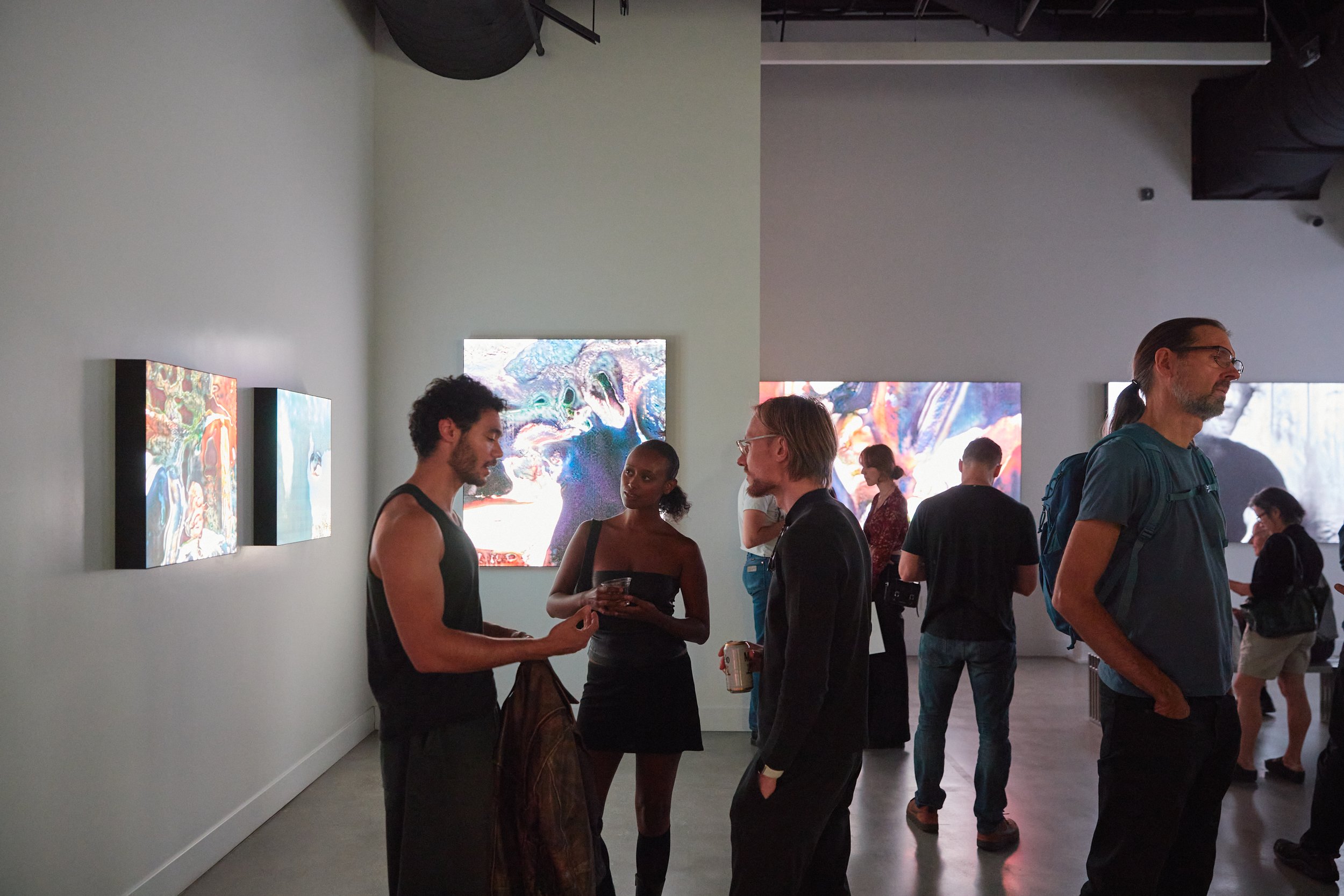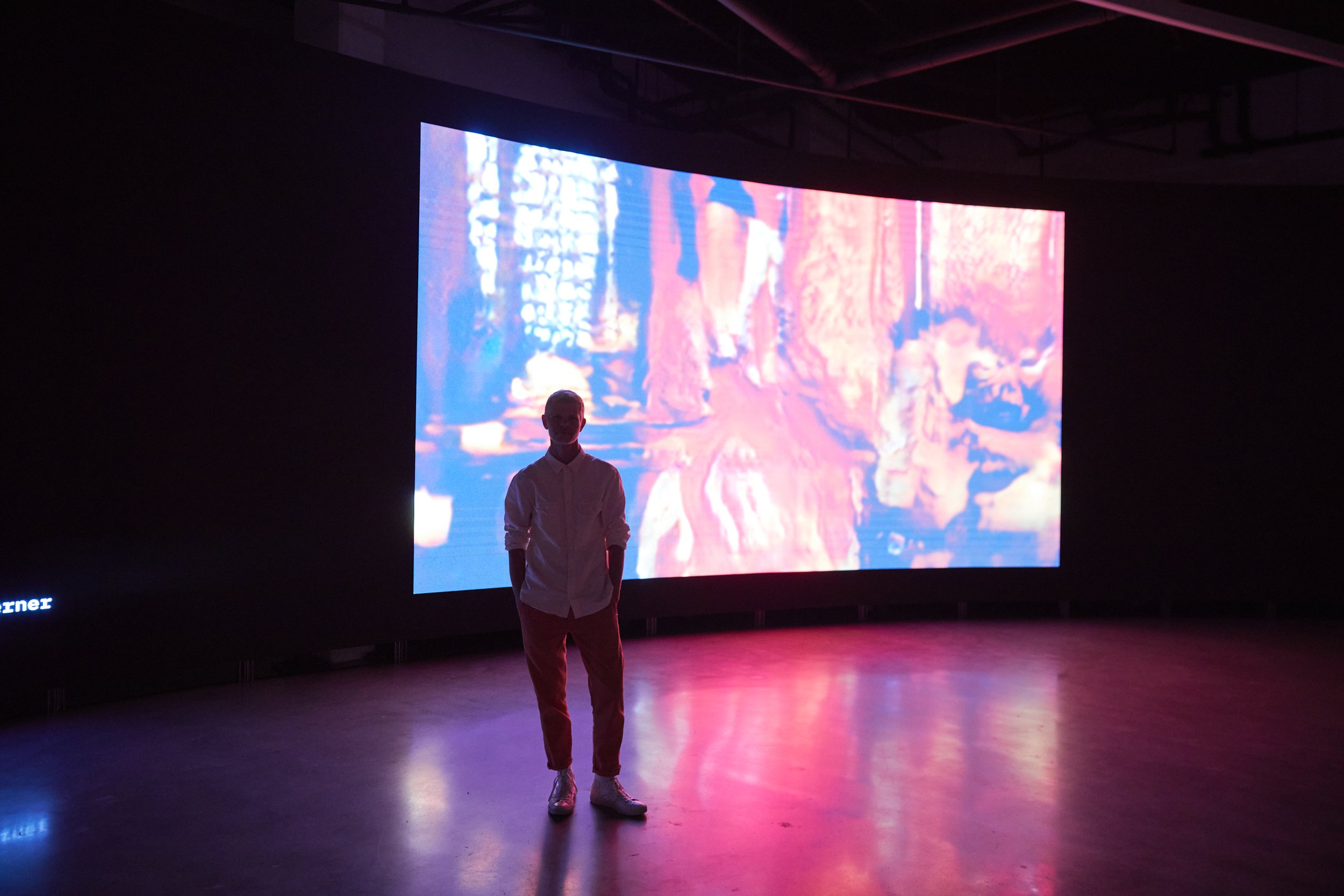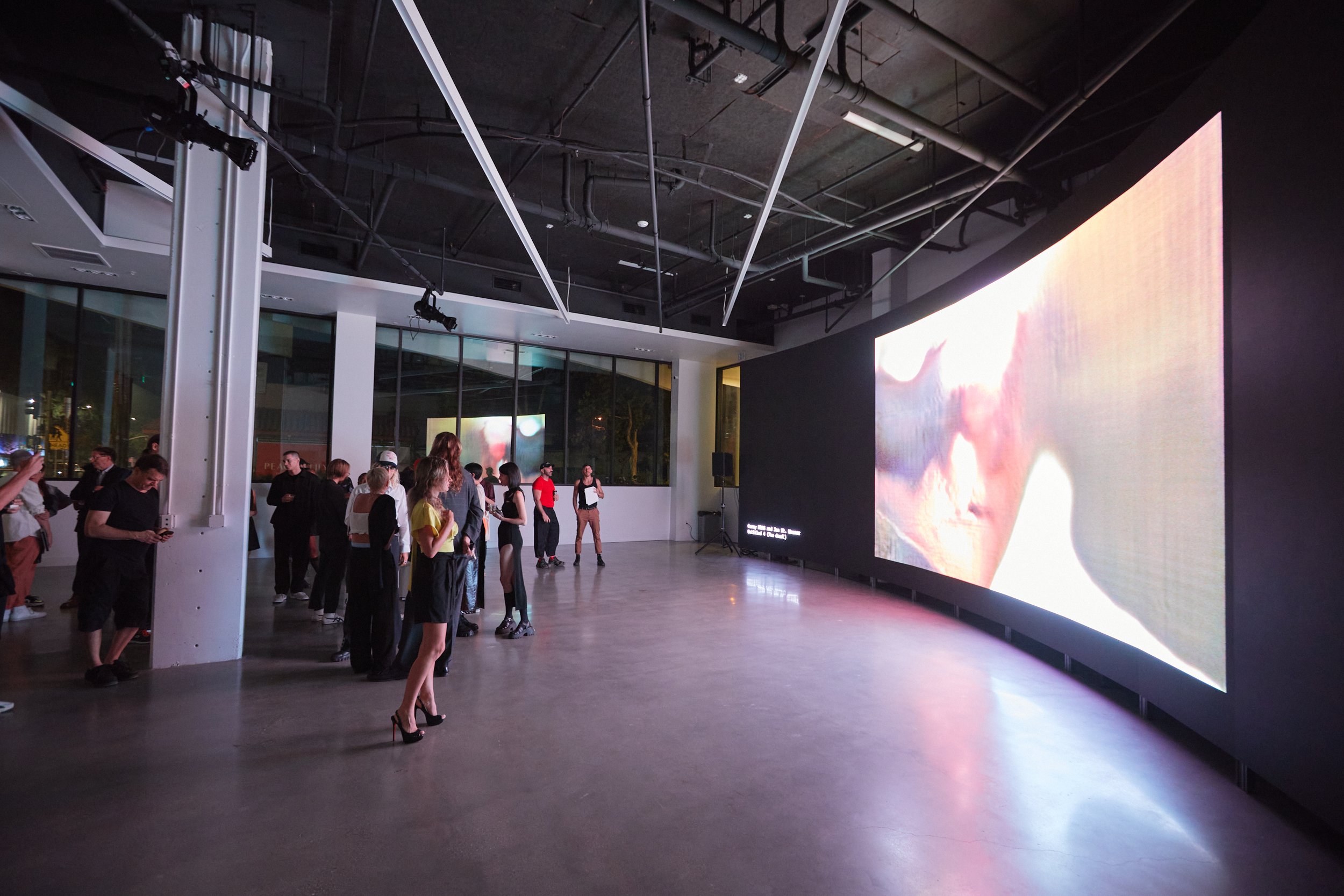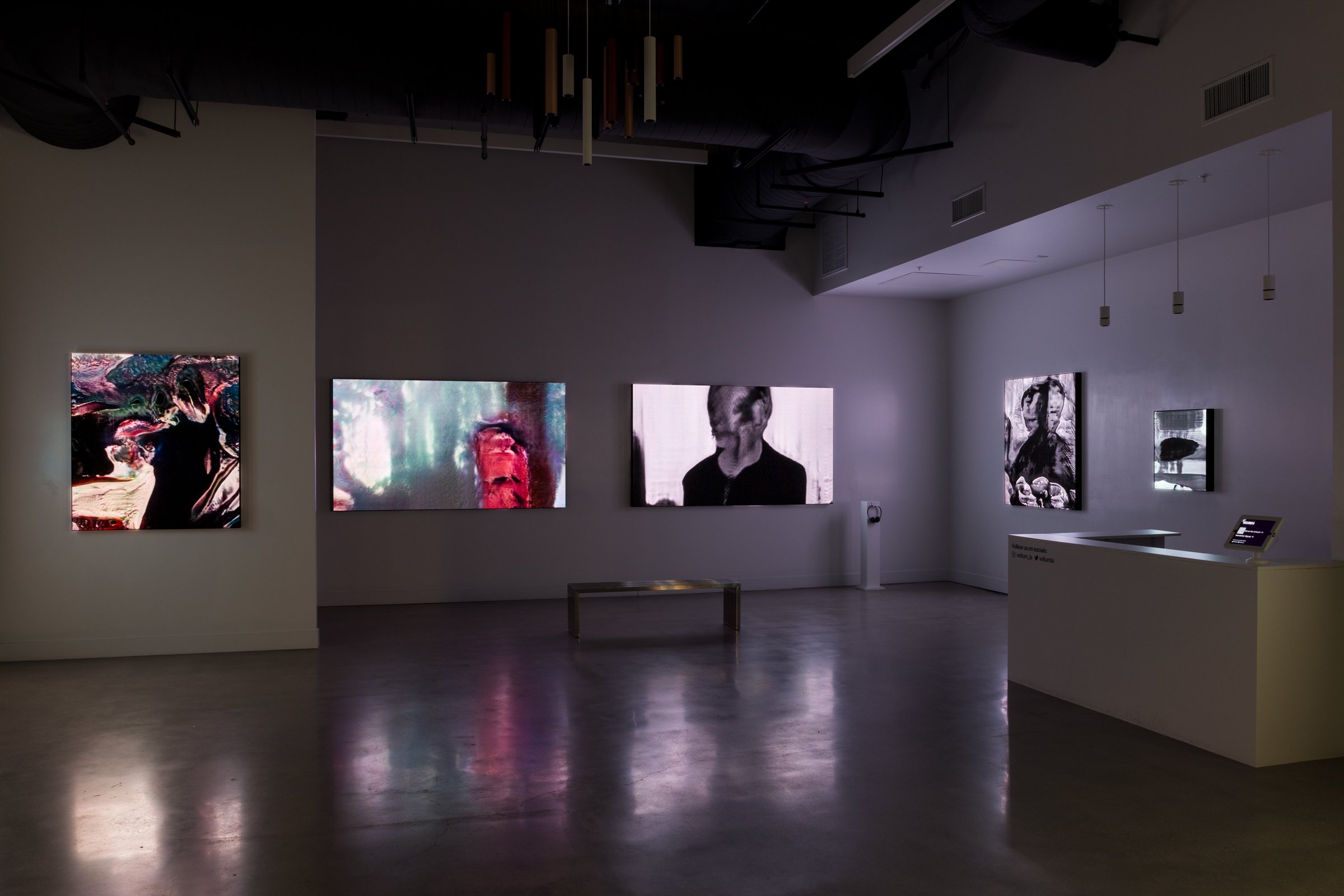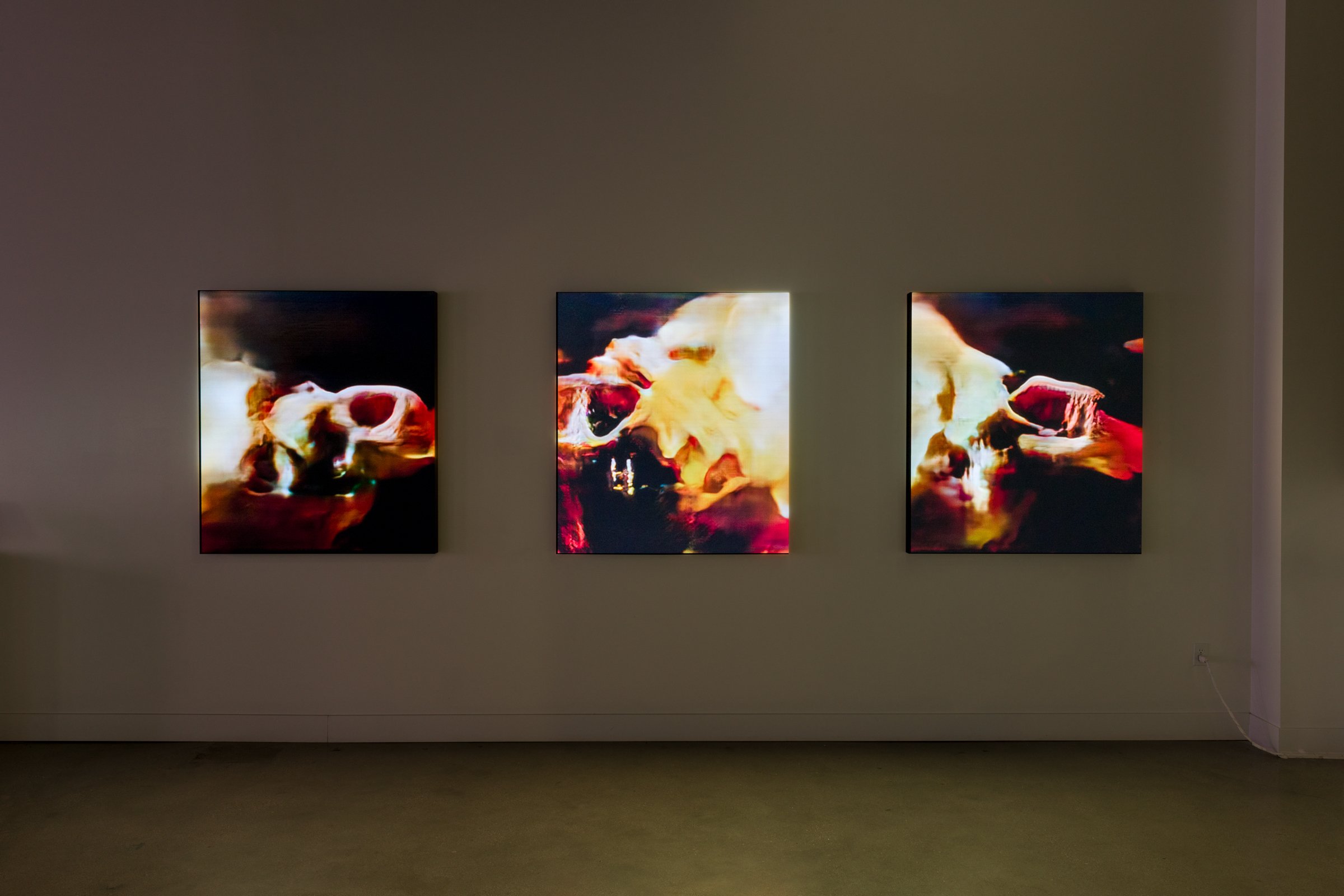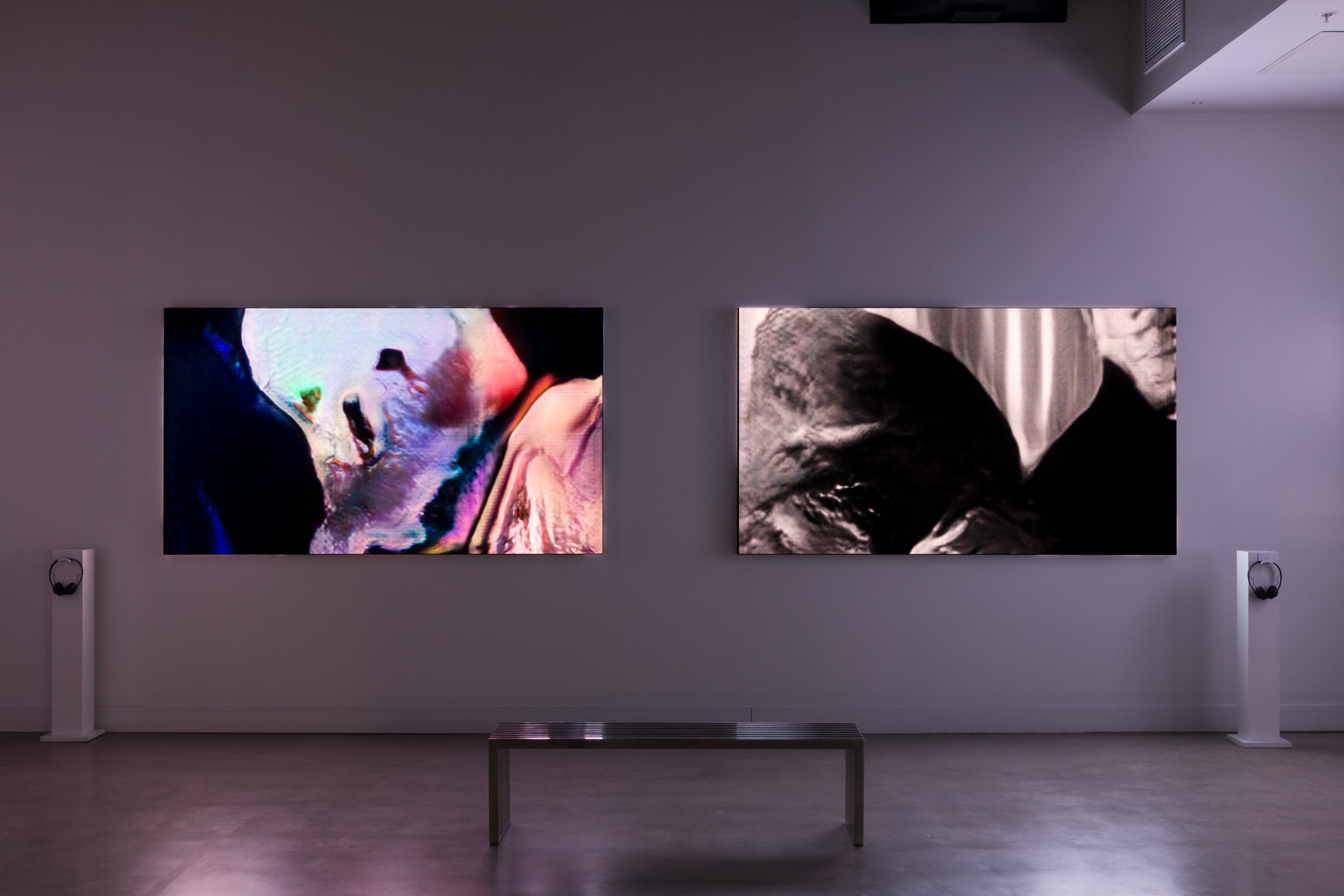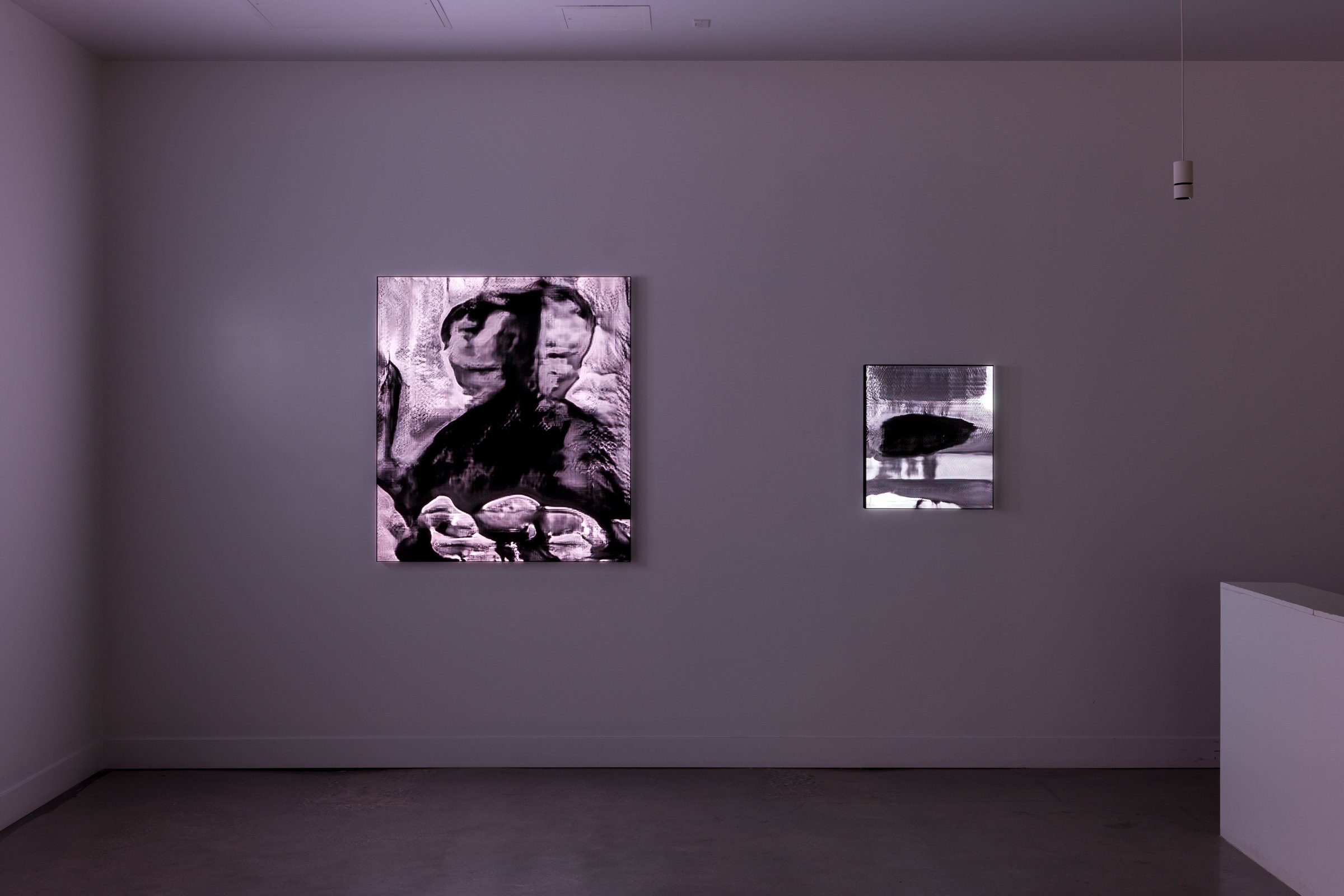Vellum LA presents
Conjured Terrain: A Casey REAS Solo Exhibition
Curated by Alice Scope, Jesse Damiani, and Sinziana Velicescu
Opening Reception:
Friday, October 6, 7-10 PM
On View at Vellum LA:
October 7 - October 29, 2023
Vellum LA
7673 Melrose Ave
Los Angeles CA 90046
Vellum LA is pleased to introduce Conjured Terrain by Casey REAS, curated by Alice Scope, Jesse Damiani, and Sinziana Velicescu. The exhibition will take place from October 7 – October 29, 2023. The exhibition is framed as a call-and-response with DAM Projects in Berlin. All work will be presented at Vellum LA on state-of-the-art Luma Canvas LED displays.
Casey REAS, the “Godfather of Generative Art,” is a pillar of the Los Angeles art community, and one of the most important and beloved new media artists working today. Conjured Terrain presents all-new work from the artist’s acclaimed, ongoing Untitled Film Stills (UFS) project, as well as associated videos from the related body of work, Compressed Cinema.
REAS’ work stands in contrast to popular narratives about art created using code, especially given the recent hype around AI image generators, which have been trained on vast datasets and are able to produce plausible imagery in many styles when a user “prompts” them. With Untitled Film Stills, REAS engages machine learning as material not to quickly produce a functional image, but instead to thoughtfully examine imagery’s ability to contain and convey realities.
“Each Untitled Film Still image is a frame from an imagined film,” REAS says. “The idea is to reveal another reality within the original film, something that has the character of the original work, but is transformed into something else. A film is a perspective from which to view the world, and a set of Untitled Film Still images are a unique view of the original film that produces a new and alternate reality in an unexpected way.”
The process begins with the artist selecting a film, which is converted into hundreds of thousands of individual frames (24 frames for each second of the original media). A machine learning model called a generative adversarial network (GAN) is then trained on those frames, by which it learns to generate imagery in the style of the original films. This process—like shooting some films—takes about a month. After the model is trained, REAS generates thousands of new images from the indefinite number of possibilities contained within the model. Sometimes, a different machine learning model is used to change the visual tone of the images. These synthesized images become the artist’s “raw footage.” REAS then curates these into smaller numbers and places them in a sequence, after which they go into “post-production,” where REAS resizes and color grades them.
There’s undoubtedly a tremendous degree of technical rigor involved in the creation of Untitled Film Stills and Compressed Cinema, but there’s an even greater degree of an artist’s intuition about which works express an idea that can’t be expressed any other way, a dance between the latent information in the original datasets and what’s ultimately cultivated in the outputs. These are artworks that stand alone as discrete objects while simultaneously engaging in a dialogue with the processes and inputs involved in their creation.
Though the models used for Untitled Film Stills are capable of producing high-fidelity, photographic images, that’s not the artist’s intention with these artworks.
“Each Untitled Film Still is an uncanny picture from a dream; it is evocative of the history of oneiric cinema,” REAS says. “The images oscillate between representation and abstraction; they require interpretation to make meaning.”
Thus, Conjured Terrain becomes an experiment with gestalt, with the boundaries of both art and technology’s role in expressing and interpreting reality. The exhibition structure echoes how the artist presents the work; Conjured Terrain is a two-part, call-and-response exhibition, with expressions in both DAM Projects in Berlin—which opened in September—and Vellum LA. At DAM, Untitled Film Stills from a different grouping were shown as physical prints on paper; at Vellum, they will be presented on digital LED displays. These works can live across both dimensions because the artist has conceived of them this way; each Untitled Film Still is the sum of its physical and digital expressions. They are presented as 1/1s, such that whoever purchases the digital work also receives print, and vice versa. If a collector prefers to only have one, the artist will archive the other.
“With Conjured Terrain, Casey REAS blends creative experimentation and technical specificity to skillfully forge an entirely new medium of artistic expression. Uncanny, profoundly unsettling and impossible to look away from, Conjured Terrain breathes life into generative art while paying homage to the trailblazing techniques of early experimental cinema. Vellum is proud to present this monumental work, giving viewers the opportunity to immerse themselves in every meticulously crafted detail, as intended by the artist.” - Sinziana Velicescu (Founder/Director, Vellum LA)
About Casey REAS
Casey REAS’ software, prints, and installations have been featured in numerous solo and group exhibitions at museums and galleries in the United States, Europe, and Asia. His work ranges from small works on paper to urban-scale installations, and he balances solo work in the studio with collaborations. REAS' work is in a range of private and public collections, including the Centre Georges Pompidou and the San Francisco Museum of Modern Art. REAS is a professor at the University of California, Los Angeles. With Ben Fry, REAS initiated Processing in 2001; Processing is an open-source programming language and environment for the visual arts.
About Jan St. Werner
Jan St. Werner is an electronic music composer and artist based in Berlin. He’s best known as one half of the electronic duo Mouse on Mars, and he also pursued a solo career creating music under his own name as well as Lithops, Noisemashinetapes, and Neuter River. Starting in the mid-1990’s as part of Cologne’s A-Musik collective, St. Werner released a steady stream of influential records both as a solo artist and with Mouse on Mars. During the 2000s, he acted as the artistic director for Amsterdam’s Institute for Electronic Music (STEIM). In 2013 Werner launched a series of experimental recordings called the Fiepblatter Catalogue on Thrill Jockey Records. Werner has been a visiting lecturer at the Arts Culture and Technology department of the Massachusetts Institute of Technology MIT, and he holds a position as a professor for Interactive Media and Dynamic Acoustic Research at the Academy of Fine Arts Nuremberg, Germany.


